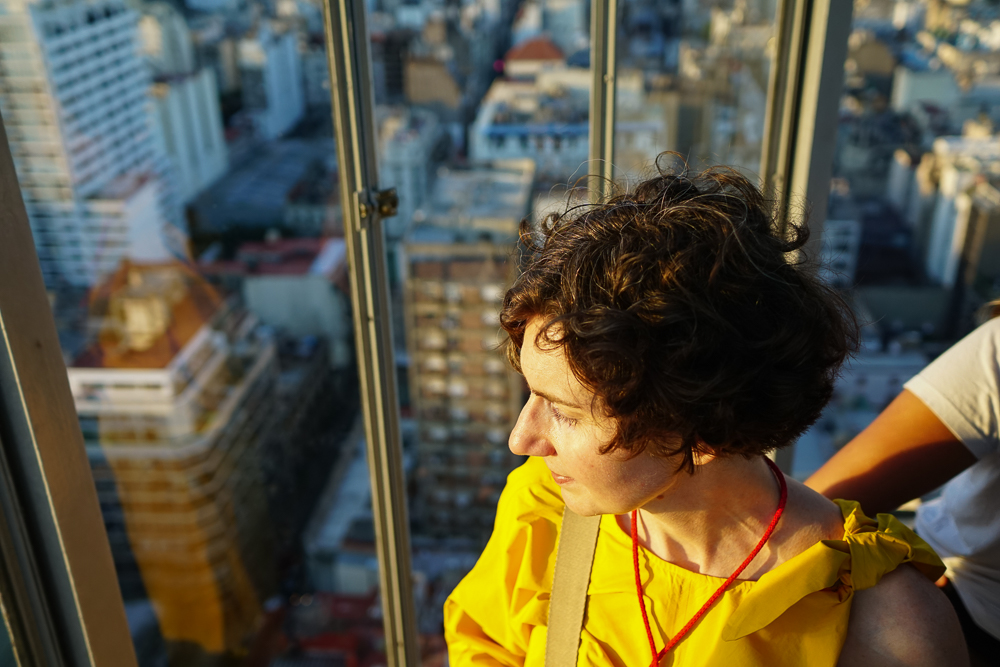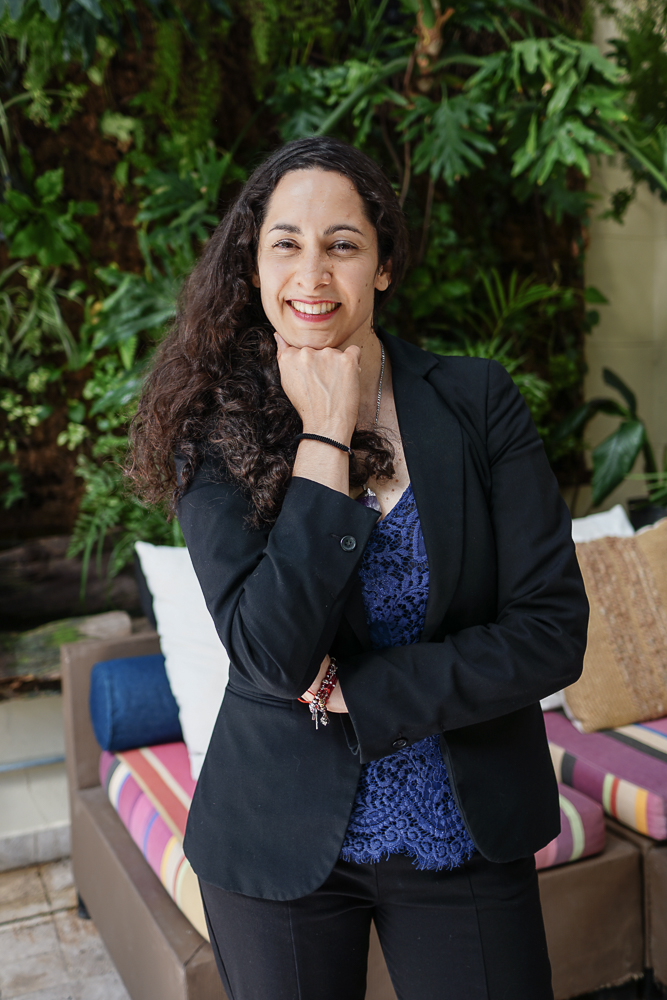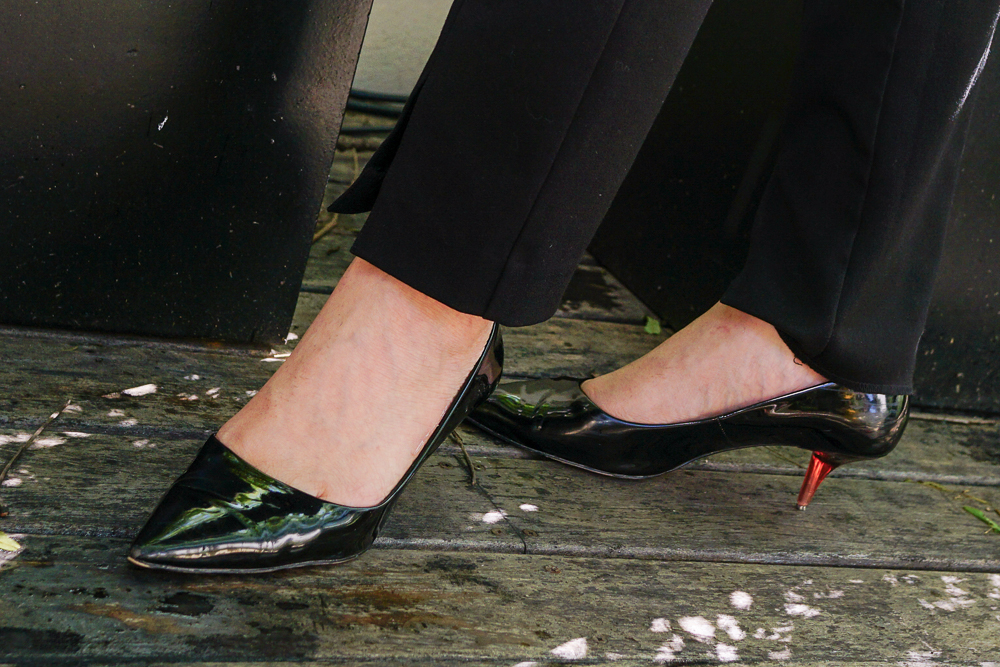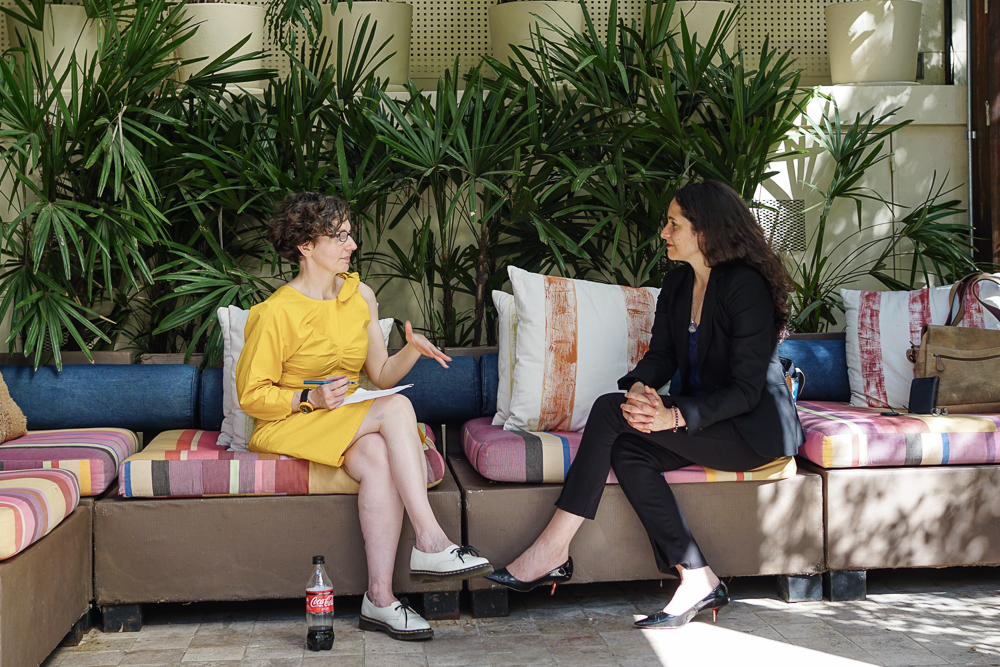The Photographer worked with Jacada Travel* to arrange our trip. Jacada does a great job of listening to a prospective traveler’s interests, hopes, and needs and then turning it into a detailed itinerary that meets all three types of expectations.
We like talking about politics, culture, and history and they’ve found the best tour guides for us.
Claudia told us that Argentines love their books. Books are displayed in the home and book collections are “read” as a reflection of the owner. (We realize that we, too, always take a moment to see what is on the shelves when we are visiting.**) Consistent with that social convention, paper is still preferred to electronic books.
Claudia also took us to a few high-level spots — tall buildings — to appreciate aerial views of city.
One of these was the Palacio Barolo — built in the 1920s. The building is both a historical landmark and a working office building.
The developer of the property asked the architect and builder to work motifs from Dante’s Divine Comedy into the design. I must admit that I didn’t entirely follow the concept throughout, but it was a grand, monumental space.
As we climbed, we stopped on a terrace at the 14th floor (Purgatorio) and then stepped onto perimeter balconies at the 20th floor. The Photographer, thinking we had reached the top, said jokingly to Claudia, “Have we reached Paradise already?” Claudia said gravely, “Oh, no, you have to work harder than that to reach heaven.”
Note the glass cupola (Heaven) at the top.
It was the hour that turns seafarers’ longings
homeward – the hour that makes their hearts grow tender
upon the day they bid sweet friends farewell;
the hour that pierces the new traveler
with love when he has heard, far off, the bell
that seems to mourn the dying of the day…
Fortunately this part of his plan never was fully realized because . . . it’s a very bad idea to place a lighthouse far inland.
The one thing that I failed to get a proper handle on while in Buenos Aires was the style of the professional women of the city. No one seems to offer “Office Tours of the Staid Professions” in which you walk through the offices of law firms and management consultancies to see what everyone is wearing and then meet with HR to review the dress code. Perhaps Directrice Global Industries Ltd. could partner with Conde Nast to fill this under-developed travel niche?
Until then, I did the next best thing: I buttonholed the manager of the hotel and the concierge. They were both so elegant, so soigné every day, that I felt they were capable of sharing the city’s best secrets with me.
Meet Luján!
According to Luján, the professional style of Buenos Aires is conservative. Neutral colors are favored; she contrasted this with Brazilian style, which is much more colorful. Cuts are modest, too; no décolletage at the office, ever. Makeup is also conservative and understated; manicures are very important. Clothes are dictated by age; women in their 30s do not dress like women in their 50s.
With these notes in hand, let’s appreciate Luján’s ensemble. She is wearing a perfectly cut and fitted black suit, but with lots of interesting details: a cobalt lace blouse, a rough amethsyt pendant, and vented hems on her trousers.
Please take special note of Luján’s shoes.
While Argentine women now wear trouser suits, heels are standard in any public-facing executive or managerial position. But these have a red lucite heel.
I did notice lots of young women wearing enormous platform shoes with their casual clothes and going-out dresses. The platforms were so big that they were impeding normal walking.
But if there were more crossover between age groups, perhaps Doc Martens would be seen in office settings? I saw a Doctor Martens store while we were walking around.
Luján wore a dark trouser suit each day, but with a bright blouse and interesting accessories. Her trousers were tapered and very flattering to her. The vents were Particularly Effective. Not sure that I could pull it off, but I liked all of it.
For those who are wondering, we stayed at The Hub Porteño Hotel in the Recoleta neighborhood of Barcelona. This boutique hotel is steps away from major thoroughfares, but tucked into a quiet side street. The rooms were beautiful and comfortable and our bathroom was enormous and well-designed. Indeed, I wish I could fold up the entire bathroom, stuff it in my suitcase, and take it home with me. There was a wonderful restaurant in the ground floor of the hotel — a destination for residents of the city and not just hotel guests — where we had several wonderful meals. And the hotel has 24-hour desk/concierge service that is always staffed with fluent English speakers.+
** The Photographer and I each owned a ton of books when we got married and discovered in the hundreds of volumes of our combined library only one duplicate: Pedagogy of the Oppressed by Paolo Freire. Both of us found this perplexing.
+ This post is also not sponsored by Hub Porteño.














What a heavenly visit this looks like!
Your comment about looking at book collections, however, confirms my anxiety about having given away/donated/sold most non-work books in a recent move, namely that if I ever have anyone over for dinner they will look at the bare bookshelves and conclude that I am an illiterate philistine.
I have the same anxiety! I’m so thankful for the internet, which reassures me on a daily basis that other people share the bulk of my anxieties, phobias, and weird ideas.
That is what the internet is for :).
Wow, Lujan looks so stylish, and it looks effortless. How do they do it?
Fun! I loved seeing Lujan’s style.
That was a good idea to check-in with the Hotel staff. They’re real people.
I too am a fan of Pedagogy of the Oppressed – part of the literature review for my dissertation while at UCLA, on Deaf Education, 2003.
I digress – the vents on the pants are EVERYTHING!
One of my favorite cities!
I share other commenters’ anxiety about giving up their book collections. When I downsized to five suitcases to retire to Mexico last year from NYC, the hardest thing to give up wasn’t the furniture, the clothes, the dishes and kitchen stuff. It was the lifetime of books. Bookcases full of books.
I still miss them, and wonder what the new friends I’m making here think of me when they see me living in a house bare of books. Of course, many of them went through a similar downsizing. And I’m buying new books here. Mostly in Spanish.